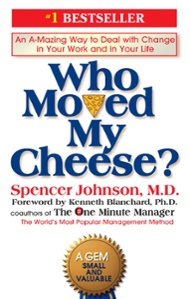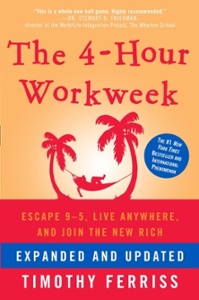Originally published on tech.mn on 1/5/23.
Break through fear, timing, and the struggle to find the excitement with these reading recommendations.
Google “top business books” and you’ll find an endless list of publications that may help you operate your business. But what if you don’t have a business?
For the startup-curious out there, I want to share a few books I found helpful in setting me off on my own startup journey. Though each offers tactical advice I still find helpful in running my business, I’ve organized this collection to speak to those who are finding it hard to get started.
Is it fear holding you back? Are you waiting for a more convenient time? Do you find yourself lacking the inspiration to make the leap? If any of this sounds familiar, I’ve been there, and I got you.
Fear is Holding You Back
If fear is holding you back from pursuing your dreams, try reading “Who Moved My Cheese?”
“Who Moved My Cheese?” is a short and silly parable about change. The characters include two mice that frequently explore a maze looking for cheese and a couple of lost souls who decide to stay put, growing increasingly comfortable with the cheese they’ve already found (*SPOILER* their comfort doesn’t last).
In the parable, the cheese is what gives us life—our job, our relationships, our purpose, and so on—and it’s constantly moving, spoiling, or being consumed. When we come to rely on it (or worse, take it for granted), it can be incredibly disruptive when it disappears. When the lost souls fail to predict the end of their cheese, they find themselves too paralyzed with fear to venture out to find another morsel.
Sound familiar?
On the other hand, the mice practice looking for cheese. Their ability to act paired with the confidence in exploring unknown parts of the maze helps them avoid running out of the thing that they care most about.
Anyone who has made the jump into entrepreneurship will tell you the fear involved in making the decision to start a company is the (first) hardest part. This book is a helpful reminder to not let fear stand in the way of action. It also provides a healthy reminder that it’s better to be able to move your own cheese than it is to have someone move it for you.

Timing is Holding You Back
If inconvenient timing is the issue, try reading “The 4-Hour Work Week.”
“The 4-Hour Work Week” was Tim Ferriss’ breakout hit and ultimately led to a number of other best sellers and a wildly successful podcast. For the price of just one book, you too could make millions while working a few short hours every week.
I’m kidding.
Though the book is chock full of practical business advice, the most important message is the value of your time. Ferriss is super prescriptive on how to optimize time. Chapters are devoted to eliminating time-consuming tasks, tips for more effective delegating, batch-processing email responses, and more. If you’re already working on something you love and need more time to do it, the book is a worthwhile refresher on how to be more efficient.
But the true point of the book is not about spending less time doing the things you hate; it’s about creating more time for the things that bring you joy. What is that for you? How can that thing become the most significant use of your time?
For Ferriss, the time to do the things that make us happy is now. If you’re struggling to even find the space to consider your sources of joy, his book should help you create a few hours a week to have more time to think about it. But don’t stop there.

Struggling to Find the Excitement is Holding You Back
If you’re failing to find something exciting enough to pursue, give “How We Got to Now: Six Innovations That Made the Modern World” a shot.
First, a caveat. This book will not inspire your next breakthrough invention, and ideas don’t change the world; execution does. As someone who constantly evaluates entrepreneurs for the sake of an investment, the best teams often pursue large problems in spaces they are highly familiar with. So, if you are looking for inspiration, look no further than your immediate industry and network.
“How We Got to Now” is a fun history lesson on innovation. In it, author Steven Johnson lays out six innovations that have altered the course of human history along with an explanation of the interconnectedness of each. What we come to realize is no invention exists in vacuum but instead is reliant upon previous breakthroughs. Could the renaissance (one of humankind’s most prolific periods of invention) have happened without the introspection made available to us by the mirror? Perhaps not.
If you’re struggling to find that breakthrough idea for a business, I hope this book alleviates you of the pressure of capturing lightning in a bottle. Innovation is not restricted to the wizards in the castle conjuring the future out of thin air. Instead, it comes from a predictable series of things that we may already be familiar with. Look around you. Your answer is closer than you’re aware.
